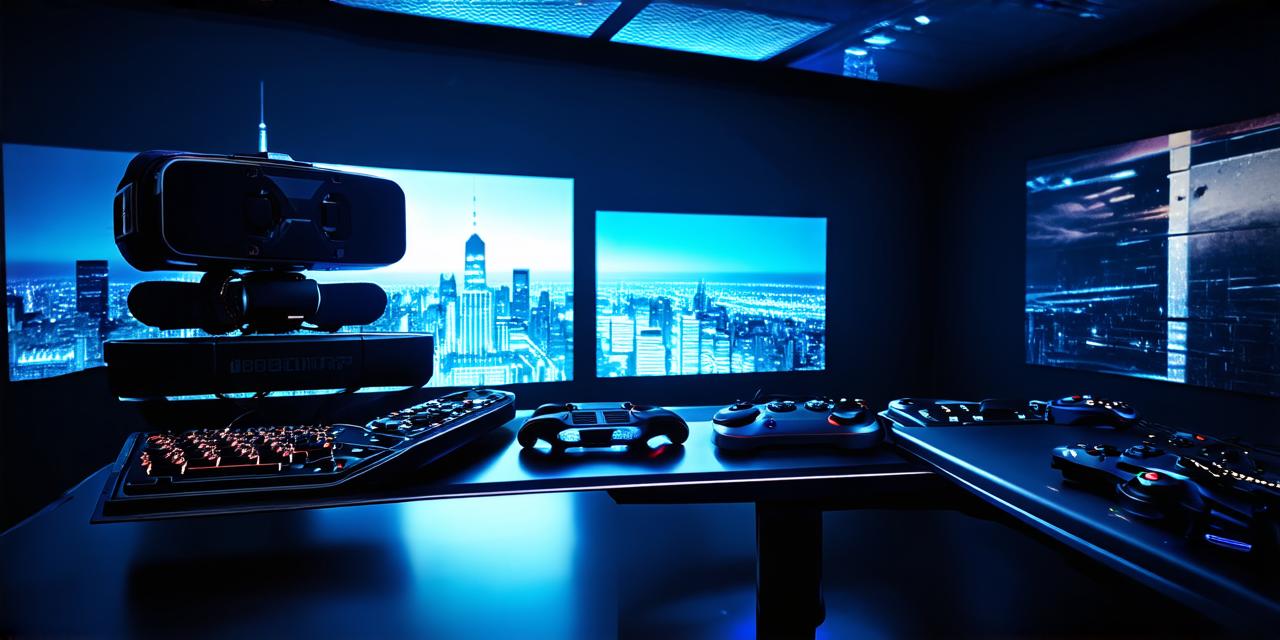Hardware Requirements
To create a VR experience, you need a powerful computer with a high-end graphics card. The most popular choice is the NVIDIA GeForce GTX series, which offers excellent performance for VR applications. You will also need a headset and controllers that are compatible with your computer. The Oculus Quest 2 is a popular choice for VR developers due to its high-quality display and affordable price point.
In addition to the computer, you will need motion sensors or tracking systems to monitor your movements in real-time. This technology allows the VR headset to adjust the images displayed based on your position and movement. The most common choice is the Oculus Rift SDK, which provides a powerful platform for developing VR applications.
Software Requirements
To create an engaging VR experience, you will need specialized software that can handle the demands of virtual reality development. There are many options available, including Unity and Unreal Engine. These engines offer a range of features, such as physics simulations, animation tools, and advanced graphics rendering capabilities.
In addition to the game engine, you will need middleware or SDKs that provide access to specific VR hardware and software features. For example, if you are using an Oculus headset, you will need the Oculus SDK to interact with the motion sensors and other hardware components.
Other Essential Elements
While hardware and software are essential for VR development, there are many other elements that can enhance your experience. These include:
-
Content Creation Tools: To create engaging content for VR, you will need specialized tools such as 3D modeling software, texture editing software, and audio creation tools. Blender is a popular choice for 3D modeling, while Photoshop and Audition are commonly used for texturing and audio creation.
-
Motion Capture: To create realistic character movements in VR, you will need motion capture technology. This involves capturing the movements of real-world actors and translating them into digital characters within the VR environment. There are many motion capture systems available, including OptiTrack and Vicon.
-
Multiplayer Capabilities: VR experiences can be enhanced by allowing multiple users to interact with each other in a shared virtual space. To achieve this, you will need multiplayer software that can handle the demands of real-time collaboration. Unity has built-in support for multiplayer, while SteamVR provides a range of tools for creating and managing multiplayer experiences.
-
User Interface Design: The user interface (UI) is a critical component of any VR experience. It must be intuitive and easy to navigate, with clear instructions and feedback provided to the user. There are many UI design tools available, including Adobe XD and Sketch.
-
Testing and Debugging: Before releasing your VR application, it is essential to thoroughly test and debug it to ensure that it works as intended. This involves simulating a range of scenarios and identifying and fixing any issues that arise. There are many testing and debugging tools available, including Valve’s SteamVR SDK and Unity’s built-in testing and debugging features.
Summary
Virtual reality is an exciting new technology that offers endless possibilities for gaming, education, and training. To create an engaging VR experience, you will need a powerful computer, specialized software, and other essential elements such as content creation tools, motion capture, multiplayer capabilities, user interface design, and testing and debugging tools. By following these guidelines, developers can create immersive and engaging VR experiences that will captivate users and push the boundaries of what is possible in the virtual world.
FAQs:
-
What type of computer do I need for VR development?
-
You will need a high-end computer with a powerful graphics card, such as the NVIDIA GeForce GTX series, to create a VR experience.
-
What software do I need for VR development?
-
There are many game engines and middleware available for VR development, including Unity and Unreal Engine. You will also need specialized tools for content creation, motion capture, multiplayer capabilities, user interface design, and testing and debugging.
-
How do I create engaging content for VR?
-
You will need specialized tools such as 3D modeling software, texture editing software, and audio creation tools to create engaging content for VR. Blender is a popular choice for 3D modeling, while Photoshop and Audition are commonly used for texturing and audio creation.
-
What is motion capture technology?
-
Motion capture technology involves capturing the movements of real-world actors and translating them into digital characters within the VR environment. There are many motion capture systems available, including OptiTrack and Vicon.
-
How do I create a multiplayer VR experience?
-
To create a multiplayer VR experience, you will need multiplayer software that can handle the demands of real-time collaboration. Unity has built-in support for multiplayer, while SteamVR provides a range of tools for creating and managing multiplayer experiences.
